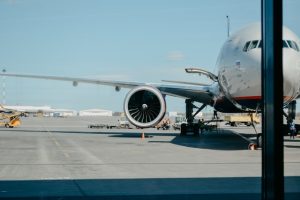
Airplanes require a propulsion system. The propulsion system is responsible for moving airplanes forward. While there are many different types of propulsion systems, two of the most common include jet engines and turboprops. What’s the difference between jet engines and turboprops exactly?
What Is a Jet Engine?
A jet engine is a type of propulsion system consisting of jet engines. They work by burning a mixture of air and jet fuel inside of a combustion chamber — similar to the internal combustion engines (ICEs) in cars and trucks. As the jet engines burn air and fuel, they’ll produce exhaust gases. The highly pressurized exhaust gases are routed through a nozzle, which propels the airplane forward.
What Is a Turboprop?
A turboprop is a type of propulsion system that leverages an engine-powered propeller. They feature an air intake, a compressor, a turbine in a few other components. Like jet engines, turboprops are designed to burn a mixture of air and fuel inside of a combustion chamber. The exhaust gases from this combustion process will then power a connected propeller.
Differences Between Jet Engines and Turboprops
Turboprops are actually classified as a type of jet engine. With that said, turboprops aren’t the same as other jet engines.
Turboprops have a propeller, whereas jet engines don’t have a propeller. Turboprops feature a propeller that’s connected to a motor. The motor will power the connected propeller by burning air and fuel.
Jet engines don’t have a propeller. Instead, they shoot highly pressurized exhaust gases out a nozzle. This is what allows jet engines to generate propulsion. As the exhaust gases are expelled, the airplane receives propulsion or “thrust.” Jet engines generate propulsion by shooting exhaust gases out of a nozzle, whereas turboprops generate propulsion by powering a propeller.
You might be wondering which propulsion system is the most efficient. At low altitudes and for short distances, turboprops come out on top. Airplanes that use turboprops are more efficient when flying at low altitudes and for short distances.
Jet engines, on the other hand, are more efficient at high altitudes and for long distances. They can fly longer distances at high altitudes while consuming less fuel than their turboprop counterparts.
In Conclusion
Along with lift, propulsion is one of the essential forces needed for flight. Some airplanes use jet engines for propulsion, whereas others use turboprops. Turboprops are a variant of jet engines that feature a propeller.



